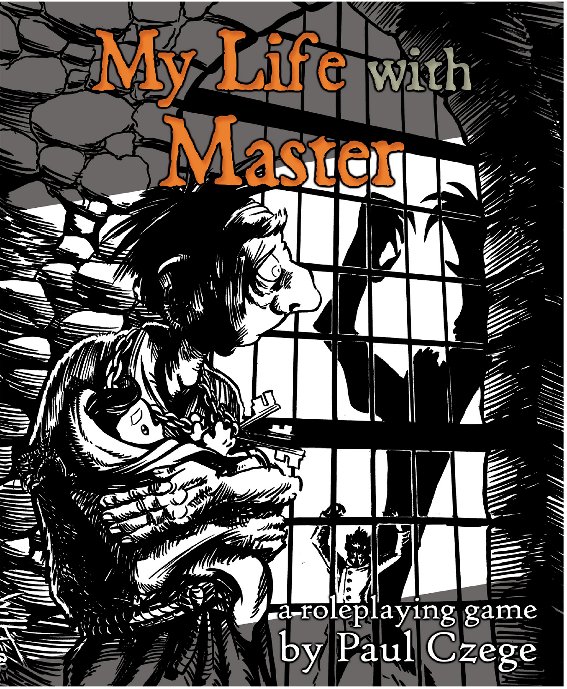I started to feel that I didn’t know roleplaying games well enough so I came up with the plan to read a roleplaying game corebook for every year they have been published. Selection criteria is whatever I find interesting.

My Life With Master is an early indie game born out of the creative nexus of the Forge discussion forum. It’s focused on the tragic stories of the misshapen and damaged servants who tend to the whims of mad geniuses and cruel monsters. You play an Igor or a Renfield, trying to maintain some semblance of humanity under a boss who thinks nothing of degrading you.
In terms of design style My Life With Master is based on the idea that the game mechanics should produce the desired story beats. It’s a collaborative narrative game. The game book explains the rules almost like a design document with a designer’s afterword that features some advice on how the game runs. Fortunately there’s an example of play to help the baffled.
The style of the game is relentlessly gothic. A self-absorbed master sends his suffering minions to abduct bodies from a graveyard. That sort of thing.
In addition to the minions and the masters the game’s social landscape is filled with townsfolk and outsiders. The townsfolk are often the victims of the tasks demanded of the minions. The master craves the approval of the outsiders. Their existence is a motivating force. As an example, the game mentions Dr. Frankenstein and the scientific colleagues he hopes to impress.
Each player character minion is essentially an individual and the game explicitly warns against making them a group. This is an interesting trend that was present in the two other Forge games I’ve read so far, Sorcerer and Trollbabe. All these games forgo the affordances granted for social play by making the players into a cohesive social unit, focusing the main action between player and GM. For this reason, My Life With Master feels like it’d work best with a fairly small number of players.
One elegant detail is the way character traits keep attention on the core themes. One is Self-loathing. Cleverly, it becomes useful when you have to brutalize the innocent.
The mechanistic focus on story is strongly present at the game’s end. There’s a specific sequence where the minion kills the master and suffers a fate dependent on how the various traits and point values have settled. As a mechanism it feels almost boardgamey in the way it wrenches the story into shape.